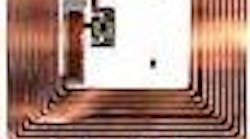As a researcher, I want to look at whats going on under the hood. I have ideas that I think could improve performance considerably, but I cant test those ideas because everything is proprietary.
Trends in radio designs increasingly are moving toward "software-defined radios." Basically, it means RF hardware is as simple as possible, and nearly all the signal processing is done in software. That makes radios a lot more flexible.
The RF module is tied to a particular frequency band, but the rest is software. My guess is that my expensive reader really is just a software-defined radio. Everybody knows about open software from the popularity of Linux and other successful open-source projects. Open source is a way for people to share ideas and technologies and for ideas to rapidly evolve. Sure, people still pay for Microsoft Windows, Word, and PowerPoint, but Linux has found a niche, from my desktop systems to the Linksys access points in my home to, yes, even this RFID reader.
What Ive been proposing is an "OpenRFID" initiative similar to the GNU Radio. OpenRFID would be the software that drives a software-defined radio to issue basic RFID commands, like read a tag ID. EPC RFID specifications are open and have been submitted as an ISO standard. Once we have the basic protocols worked out, the cost of a simple reader should be no more than the cost of hardware.
I havent figured out how to fund it or find the right open software model, but I have figured out that a good RFID reader should cost a lot less. In fact, I priced building my own portable, battery-operated prototype in low quantity, using expensive, high-end components and custom boards. In quantity, I estimate the cost would fall well under $1,000, and Ive seen similar radios for less.
The commercial impacts of OpenRFID are clear. Wed have cheaper RFID readers. But it goes much deeper than that. Opening up RFID puts technology in the hands of the masses. It means universities can study and explore design tradeoffs, and that means better technology down the line. It means companies can develop new technologies and uses for readers without having to reinvent the reader or pay expensive royalties. That means more innovation and more companies bringing ideas to market. It means more choices in RFID equipment. It especially means products that meet demand, not products that have the highest profit margins.
At the 2007 IEEE RFID conference a couple weeks ago, I finally got some traction for the idea. I plan on trying to organize the research community and develop a proposal to get National Science Foundation funding to develop such a thing. Its still in the early stages where Im trying to strategize, but its a start. Given the way government funding works, it will probably be more than one calendar year before the project would start, and thats probably being optimistic.
An alternative approach would be to organize the business community to fund or augment funding such a project. Sound interesting? Think youd like to participate? Let me know.
| About the Author |




